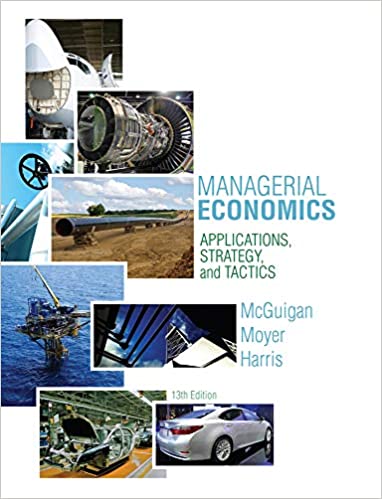
Managerial Economics 13th Edition by James McGuigan,Charles Moyer,Frederick Harris
Edition 13ISBN: 978-1285420929
Managerial Economics 13th Edition by James McGuigan,Charles Moyer,Frederick Harris
Edition 13ISBN: 978-1285420929 Exercise 6
Define Q to be the level of output produced and sold, and assume that the firm's cost function is given by the relationship
TC = 20 + 5Q + Q 2
Furthermore, assume that the demand for the output of the firm is a function of price P given by the relationship
Q = 25 - P
a. Define total profit as the difference between total revenue and total cost, and express in terms of Q the total profit function for the firm. (Note: Total revenue equals price per unit times the number of units sold.)
b. Determine the output level where total profits are maximized.
c. Calculate total profits and selling price at the profit-maximizing output level.
d. If fixed costs increase from $20 to $25 in the total cost relationship, determine the effects of such an increase on the profit-maximizing output level and total profits.
TC = 20 + 5Q + Q 2
Furthermore, assume that the demand for the output of the firm is a function of price P given by the relationship
Q = 25 - P
a. Define total profit as the difference between total revenue and total cost, and express in terms of Q the total profit function for the firm. (Note: Total revenue equals price per unit times the number of units sold.)
b. Determine the output level where total profits are maximized.
c. Calculate total profits and selling price at the profit-maximizing output level.
d. If fixed costs increase from $20 to $25 in the total cost relationship, determine the effects of such an increase on the profit-maximizing output level and total profits.
Explanation
The given cost function is as follows:
...
Managerial Economics 13th Edition by James McGuigan,Charles Moyer,Frederick Harris
Why don’t you like this exercise?
Other Minimum 8 character and maximum 255 character
Character 255


